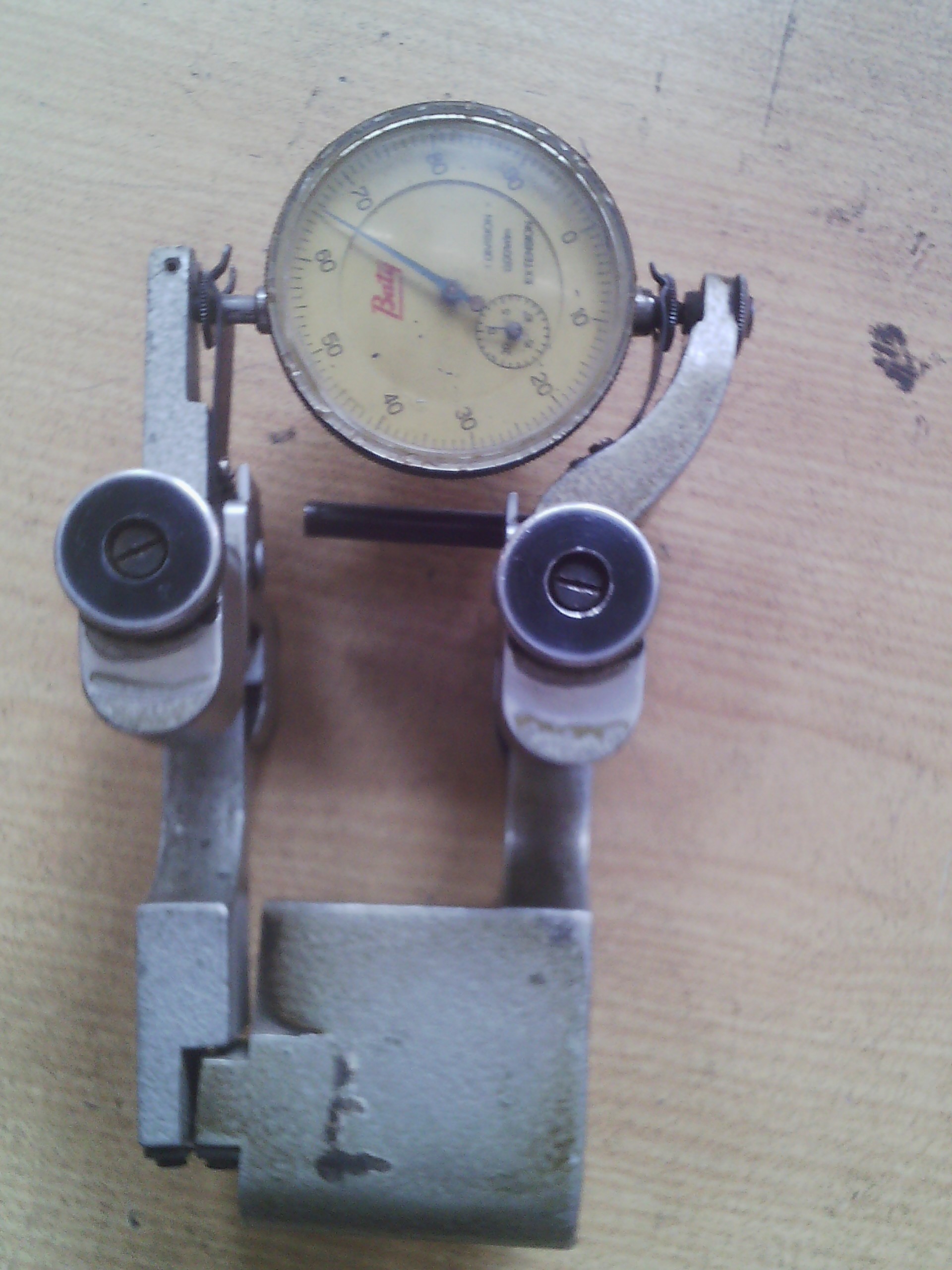Job 2:
Study of small instruments
- Inside caliper:
The inside calipers are used to measure the internal size/diameter of an object.
It consists of a pair of adjustable pivoted legs.
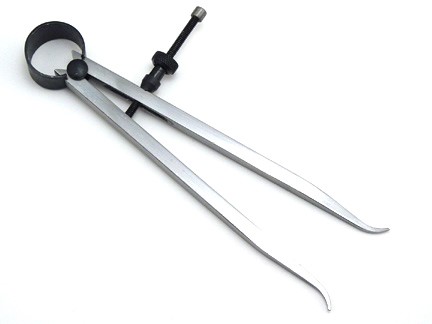
- Outside caliper:
Outside calipers are used to measure the external size/diameter of an object.
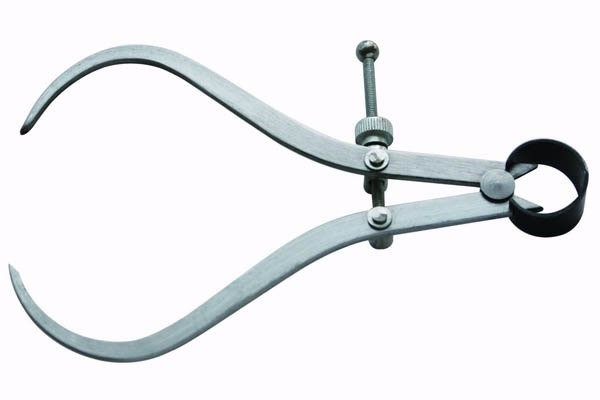
- Outside caliper: (with scale)
It is also used to measure the external size/diameter of an object but it consists of dial scale to measure our observation easily.
Its range is 1”
Its least count is 0.0025”
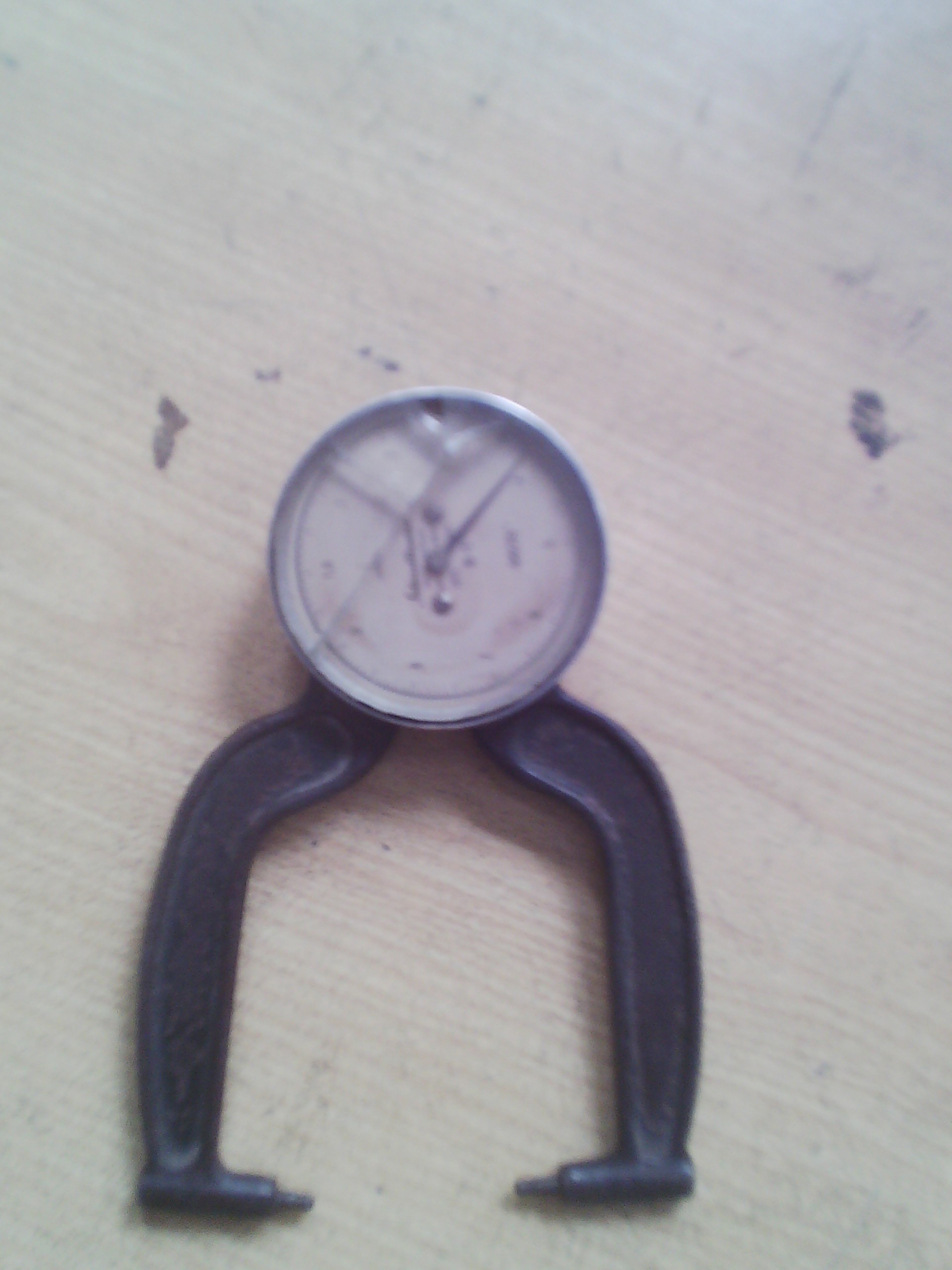
- Spring divider:
A spring divider consists of two sharp points at the end of straight legs that are held apart by a spring and adjusted by means of a screw and nut. The spring divider is available in sizes from 3 to 10 inches in length.
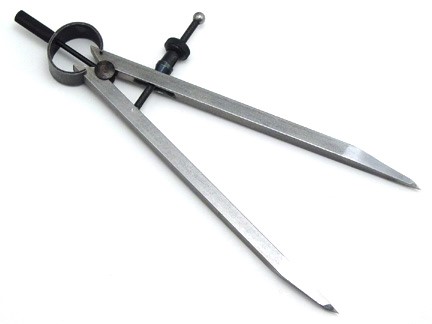
- Vernier caliper:
The Vernier Caliper is a precision instrument that can be used to measure internal and external distances extremely accurately.
It can measure outer and inner diameter as well as it can measure the depth.
It can measure the dimensions in “inches” and in “mm”
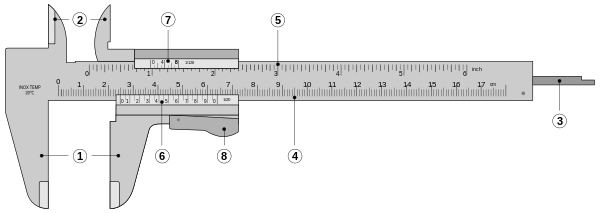
Parts of a vernier caliper:
- Outside large jaws: used to measure external diameter or width of an object
- Inside small jaws: used to measure internal diameter of an object
- Depth probe: used to measure depths of an object or a hole
- Main scale: scale marked every mm
- Main scale: scale marked in inches
- Vernier scalegives interpolated measurements to 0.1 mm or better
- Vernier scalegives interpolated measurements in fractions of an inch
- Retainer: used to block movable part to allow the easy transferring of a measurement
Least count: L.C= 0.05mm
Method of taking reading:
Main scale reading line number + line number of vernier scale coinciding with main scale × LC =—— mm
- Screw gauge:
A micrometer screw gauge is used for measuring dimensions smaller than those measured by the vernier calipers.
Using Micrometer Screw Gauge
Just like a vernier calipers, a micrometer screw gauge also carries two scales, a main scale and an auxiliary scale.
The main scale is a millimeter scale graduated to 0.5 mm, whereas the auxiliary scale is divided into 50 equal divisions.
The auxiliary scale is on the thimble of the screw gauge and measures hundredth of the measurement. The jaws of the gauge are moved rotating the thimble. The auxiliary scale on the thimble is also known as the vernier rotating scale.
Parts of screw gauge:
Anvil:
The shiny part that the spindle moves toward, and that the sample rests against.
Sleeve / barrel / stock:
The stationary round component with the linear scale on it. Sometimes vernier markings.
Lock nut / lock-ring / thimble lock:
The knurled component (or lever) that one can tighten to hold the spindle stationary, such as when momentarily holding a measurement.
Spindle:
The shiny cylindrical component that the thimble causes to move toward the anvil.
Thimble:
The component that one’s thumb turns. Graduated markings.
Ratchet stop:
Device on end of handle that limits applied pressure by slipping at a calibrated torque.
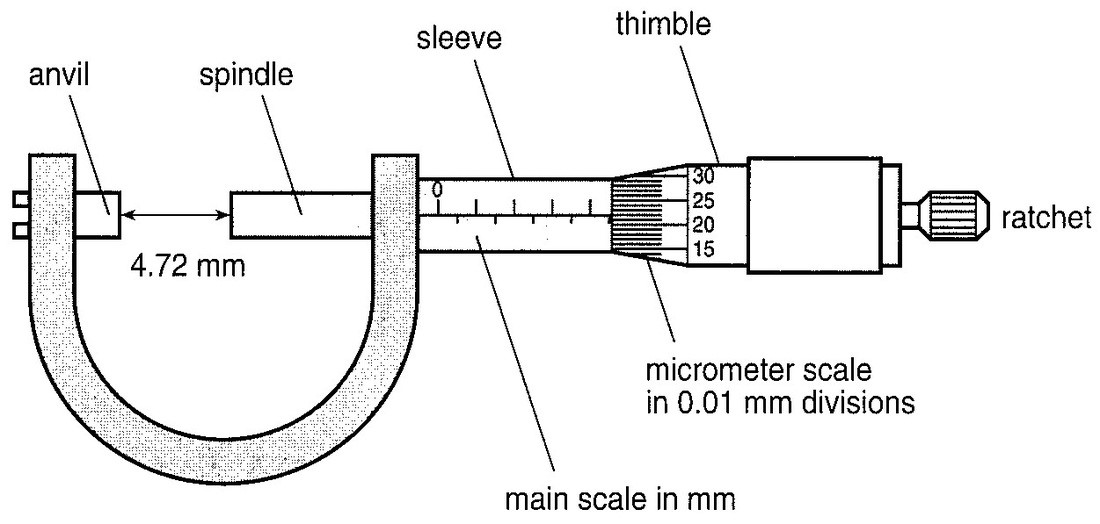
- Deflection gauge:
It is used to measure deflection in beams.
Its range is 1”
Its least count is 0.001”it consists of two dials one is bigger and one is smaller. When bigger dial completes one rotation the small dial shows its needle at 1 and if it completes two rotations its small needle is at 2.
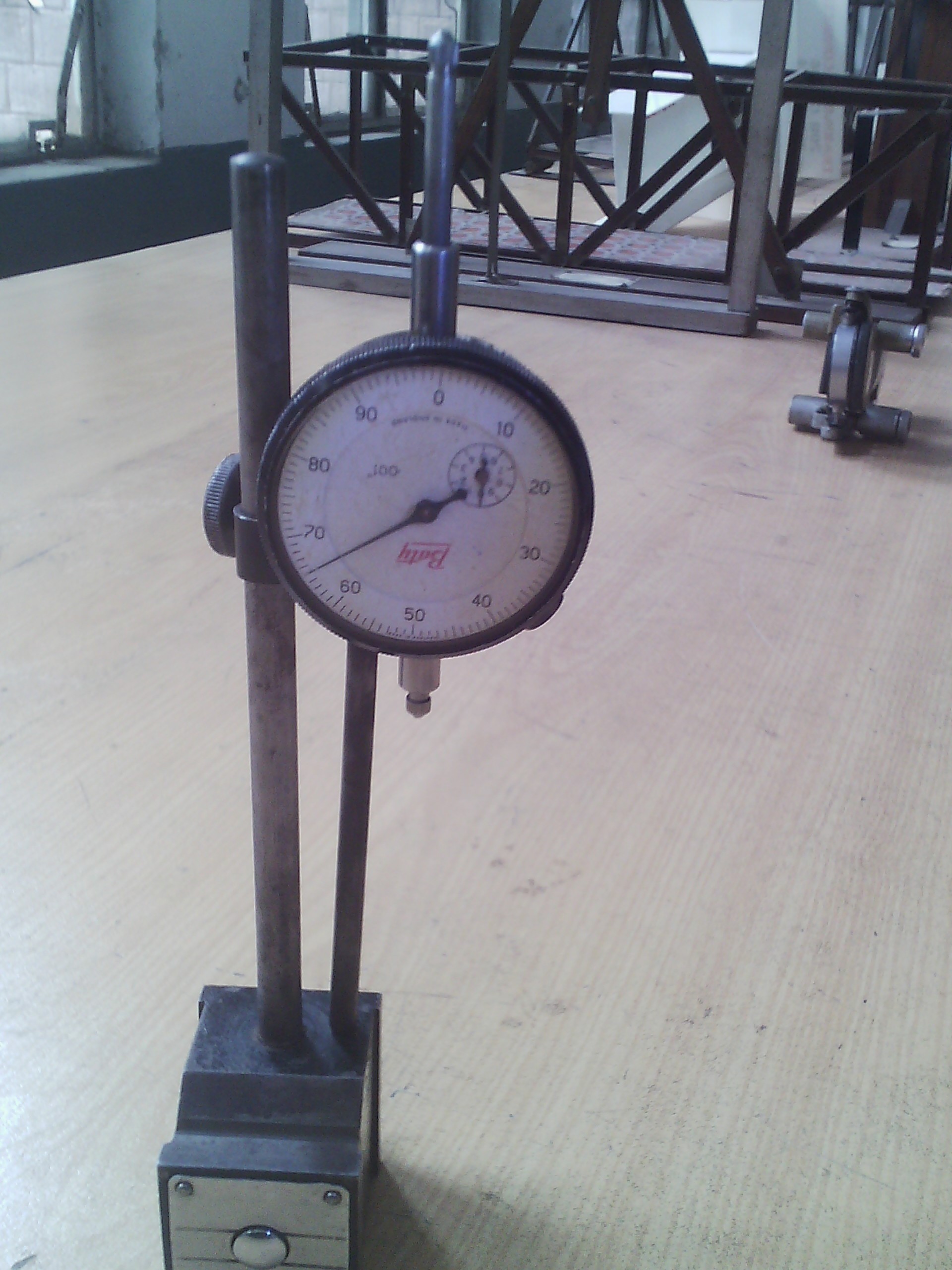
- Baty’s extensometer:
It is used to measure elongation or strain in steel bars in tension test.
It is a device used to measure changes in length.
Its range is 0-25mm.
It also consists of two dial scales.
